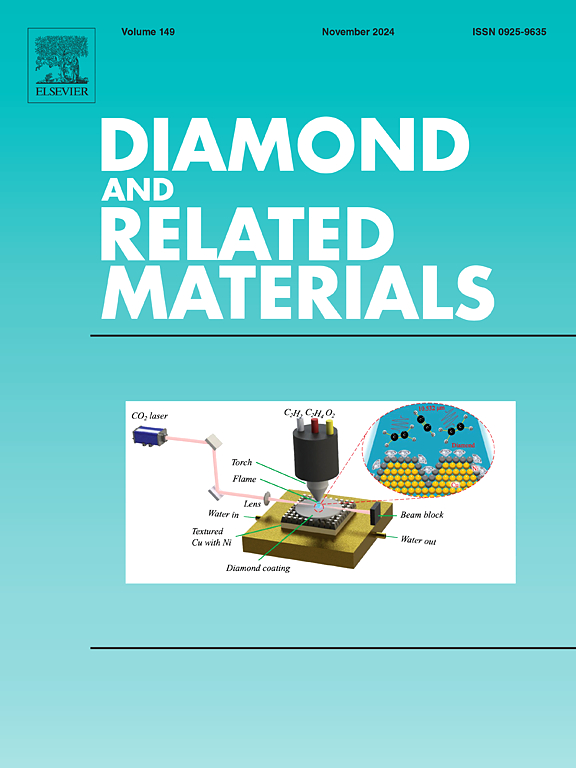Strategic design of nitrogen and sulphur co-doped biocarbon/nickel hexacyanoferrate nanocomposite for efficient removal of ciprofloxacin and amoxicillin antibiotics from water
IF 4.3
3区 材料科学
Q2 MATERIALS SCIENCE, COATINGS & FILMS
引用次数: 0
Abstract
The persistence, toxicity and prevalence of pharmaceutical pollutants in aquatic systems, such as Amoxicillin (AMX) and Ciprofloxacin (CIP), pose substantial environmental and health concerns. This report introduces a novel NiHCF/NSBC composite that was synthesized by combining nickel hexacyanoferrate (NiHCF) with nitrogen and sulphur co-doped biocarbon (NSBC) derived from coconut shells. The hybrid composite takes advantage of the high surface area, enhanced electronic conductivity and active sites introduced by NSBC to overcome the constraints of bare NiHCF, including the rapid recombination of charges and the restricted absorption of visible light. The composite's structural integrity, chemical interaction and synergistic properties were verified through a comprehensive characterization such as X-ray Diffraction (XRD), Fourier Transform Infrared Spectroscopy (FTIR) and Scanning Electron Microscopy (SEM) techniques. The NiHCF/NSBC composite demonstrated an increased surface area (176 m2/g) and diminished photoluminescence intensity in comparison to pristine NiHCF and NSBC, indicating higher pollutant adsorption and lower charge recombination. The photocatalytic degradation results demonstrated that NiHCF and NSBC were substantially outperformed, which demonstrated remarkable degradation efficiencies of 94 % for CIP and 92 % for AMX under visible light within 90 min. The mechanism of enhanced photocatalytic activity of NiHCF/NSBC proposed through EIS, photocurrent, scavenger and PL studies. Excellent stability was verified through reusability experiments across numerous cycles. These results confirm the NiHCF/NSBC composite as a sustainable and efficient photocatalyst for the remediation of pharmaceutical pollutants, offering an environmentally favorable solution for water purification under visible light irradiation.

氮硫共掺杂生物碳/六氰高铁酸镍纳米复合材料对水中环丙沙星和阿莫西林抗生素的高效去除策略设计
药物污染物在水生系统中的持久性、毒性和普遍性,如阿莫西林(AMX)和环丙沙星(CIP),构成了重大的环境和健康问题。介绍了以椰子壳为原料,将六氰高铁酸镍(NiHCF)与氮硫共掺杂生物碳(NSBC)结合制备的新型NiHCF/NSBC复合材料。该杂化复合材料利用了NSBC引入的高表面积、增强的电子导电性和活性位点,克服了裸NiHCF的限制,包括电荷的快速重组和可见光的有限吸收。通过x射线衍射(XRD)、傅里叶变换红外光谱(FTIR)和扫描电子显微镜(SEM)等综合表征技术,验证了复合材料的结构完整性、化学相互作用和协同性能。与原始NiHCF和NSBC相比,NiHCF/NSBC复合材料的表面积增加(176 m2/g),光致发光强度降低,表明其对污染物的吸附能力增强,电荷重组能力降低。光催化降解结果表明,NiHCF和NSBC的光催化性能明显优于NiHCF和NSBC,在可见光下90 min内,NiHCF和NSBC对CIP和AMX的降解效率分别达到94%和92%。通过EIS、光电流、清除剂和PL研究,NiHCF/NSBC光催化活性增强的机理。通过跨多个周期的可重用性实验验证了出色的稳定性。这些结果证实了NiHCF/NSBC复合材料是一种可持续、高效的光催化剂,可用于药物污染物的修复,为可见光下的水净化提供了一种环保的解决方案。
本文章由计算机程序翻译,如有差异,请以英文原文为准。
求助全文
约1分钟内获得全文
求助全文
来源期刊

Diamond and Related Materials
工程技术-材料科学:综合
CiteScore
6.00
自引率
14.60%
发文量
702
审稿时长
2.1 months
期刊介绍:
DRM is a leading international journal that publishes new fundamental and applied research on all forms of diamond, the integration of diamond with other advanced materials and development of technologies exploiting diamond. The synthesis, characterization and processing of single crystal diamond, polycrystalline films, nanodiamond powders and heterostructures with other advanced materials are encouraged topics for technical and review articles. In addition to diamond, the journal publishes manuscripts on the synthesis, characterization and application of other related materials including diamond-like carbons, carbon nanotubes, graphene, and boron and carbon nitrides. Articles are sought on the chemical functionalization of diamond and related materials as well as their use in electrochemistry, energy storage and conversion, chemical and biological sensing, imaging, thermal management, photonic and quantum applications, electron emission and electronic devices.
The International Conference on Diamond and Carbon Materials has evolved into the largest and most well attended forum in the field of diamond, providing a forum to showcase the latest results in the science and technology of diamond and other carbon materials such as carbon nanotubes, graphene, and diamond-like carbon. Run annually in association with Diamond and Related Materials the conference provides junior and established researchers the opportunity to exchange the latest results ranging from fundamental physical and chemical concepts to applied research focusing on the next generation carbon-based devices.
 求助内容:
求助内容: 应助结果提醒方式:
应助结果提醒方式:


